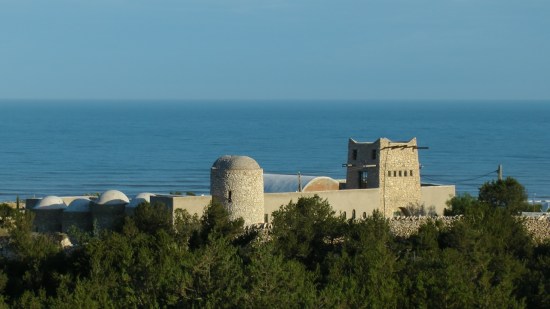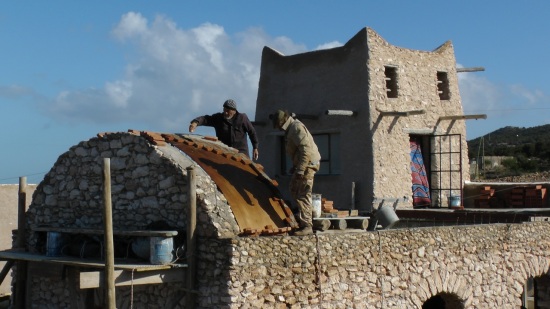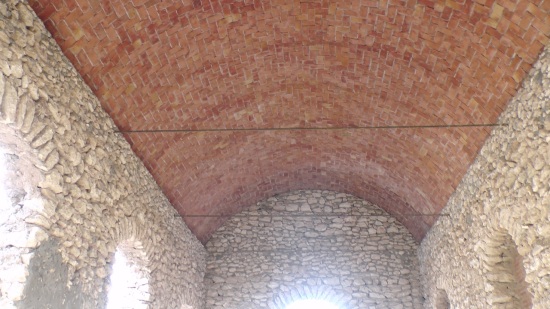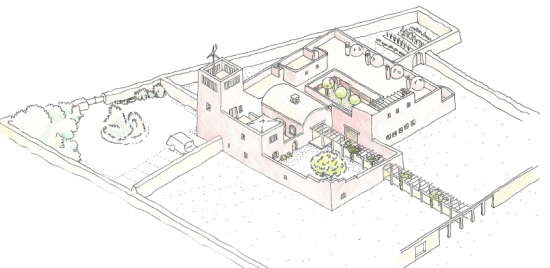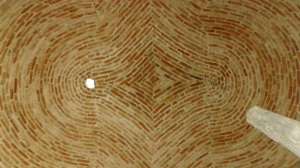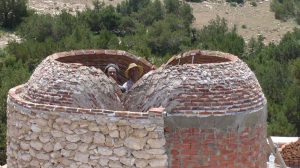Pepe, our landlord in Spain, was spraying last month. This little orchard valley, normally so calm and peaceful, so seemingly organic, throbbed to the chunk of his tractor and my nostrils were filled with his poison. He was giving every fruit tree a thorough dowsing with a pesticide/fungicide mix and there are over a hundred of them. The breeze wasn’t strong enough to purge the atmosphere and my open air office was amidst a fume. At every extra powerful waft across my nostrils I found myself looking about for my lizard friends. They eat from our hands here, joining us at the table every lunch time. Were they still alive? How could their tiny lungs cope with this?
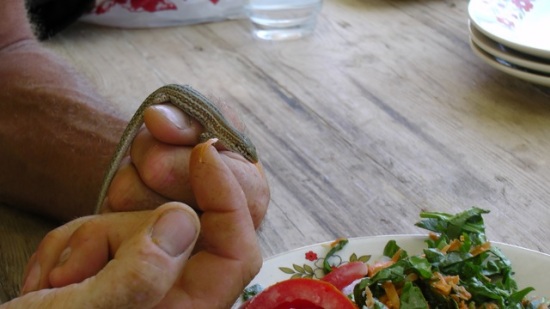
I am in love with the miniature world around me. It’s denizens delight far more than dismay. I can cope with a hole in my apple and even with the maggot inside – “It’s good for you.” My mother would say. The cloud of fruit flies arising from the compost bucket only serve to remind me to be more timely with it’s emptying. It’s not their fault. Pepe told us we could not now, for sake of our health, eat any fruit from certain trees for 2 weeks! Why two weeks? Would it it take that long for the trees to recover from this train crash of an experience? Did this stuff penetrate into the very fruit?
When he left I went out to search for survivors. Nothing from the visible insect world moved. So what then of the invisible world in the earth beneath my feet, whose inhabitants could not fly away, or the pupae waiting to disgorge butterflies? In three days he emptied more than 600 litres of poisonous water into an area of barely more than a hectare. And he was doing no more than any other modern farmer. Therefore what of the fruit on the shelves; has that been left two weeks also?
When we were making tribal documentaries in the jungles of West Papua and the Amazon, I’d often find myself standing around waiting for the film crew to need me. It became a game of mine in these otherwise boring moments: to stand in one spot and slowly turn through 360°, turning over every leaf within reach to see what I could find. Almost invariably I would discover something I’d never seen before and it would tease my sense of wonder that perhaps this little creature staring back at me was as yet unknown to science too. 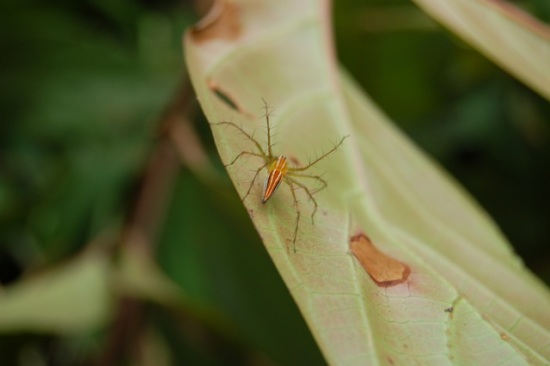
At night, the kerosene lamps in the film crew’s dining hut would attract moths by the hundred. The variety of colours and patterns was astounding, evolution gone mad with a palette. 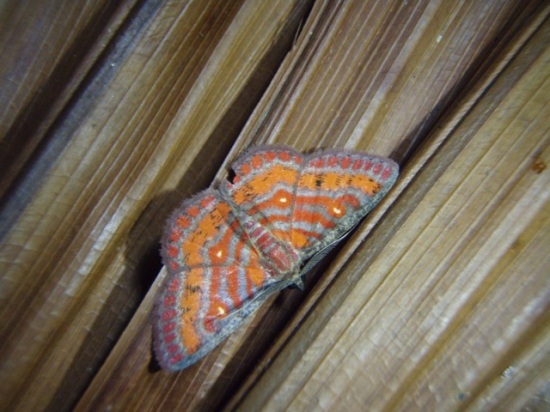
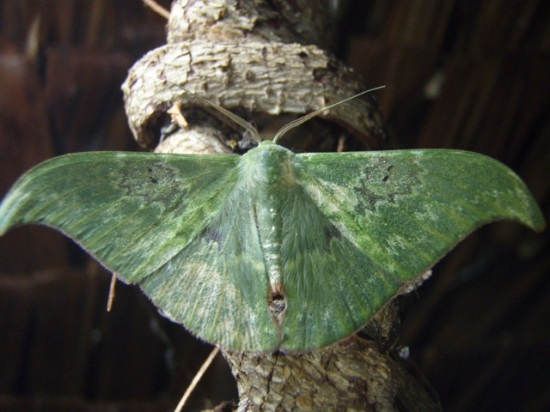
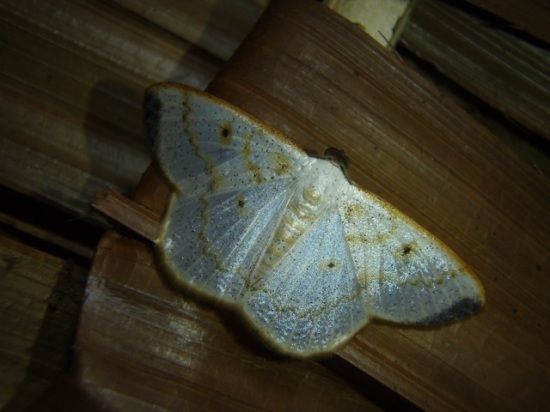
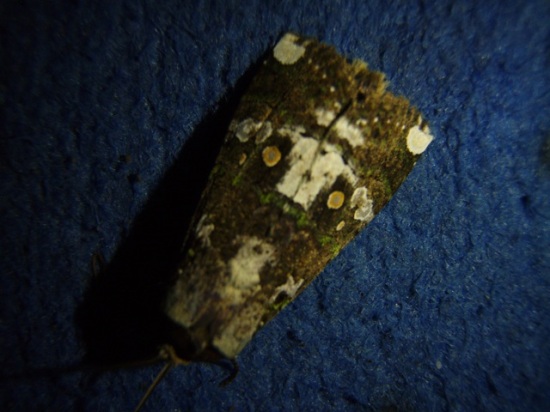
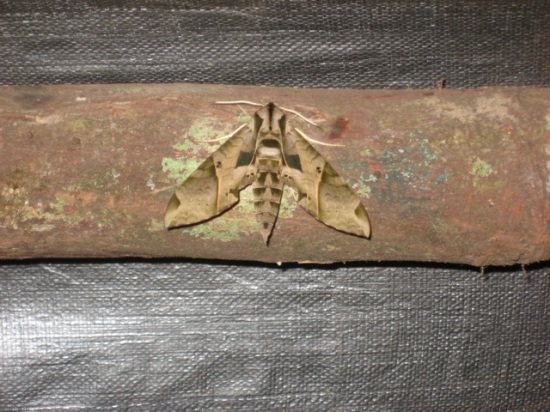
Different types of insect would come in surges, covering us for a few days and then disappearing to be replaced by another. Some of these infestations were met with more excitement by our indigenous hosts than others, such as the coming of the young cicadas.

Ungainly in flight and slow in reaction they were easy to scoop up from wherever they’d crash-landed and the children’s mouths were stuffed full of them. The hardened earth between the village huts glittered with their discarded wings. We would be presented handfuls of them as a mid morning snack and I began to enjoy the crunchy sweetness.
The Kombai people, in West Papua, periodically gorge on sago grubs, actually the larvae of the Capricorn beetle. And as they break open a palm trunk to get at these there’s another insect’s larvae that’s ideal for putting in ones ears to give them a good clean. To describe as peculiar the sensation of having an insect slowly chomping it’s way into your skull is an understatement.

The explosion of juices around the mouth as I bit into my first sago grub was another sensation that was difficult to handle. After a while, however, I enjoyed far more eating these alive and wriggling when they tasted like a sweet stem of grass than when they’d turned rubbery over a fire and taken on the flavour of old cheese.
Jungle peoples have no need of enslaving themselves for an expensive jewel when nature can provide something like this.
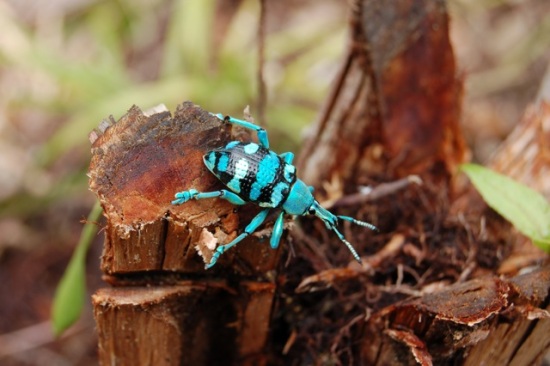
This dude has some beetle carapaces danging from his beard.
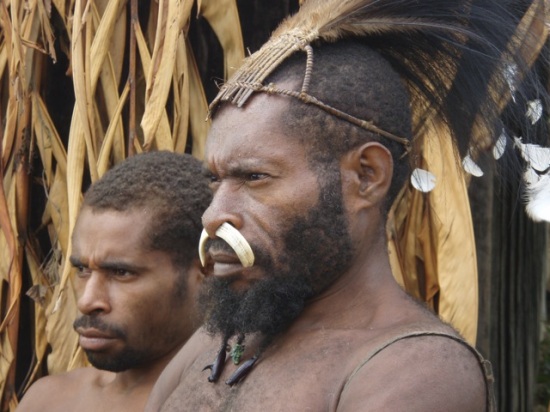
I took all these pictures on my little waterproof Olympus. Many didn’t come out well, but check out the face on this little monster. Click on him a few times to get closer.
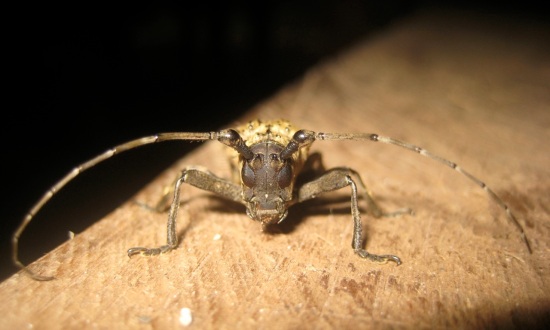
And the mechanics of this 4cm long beetle.
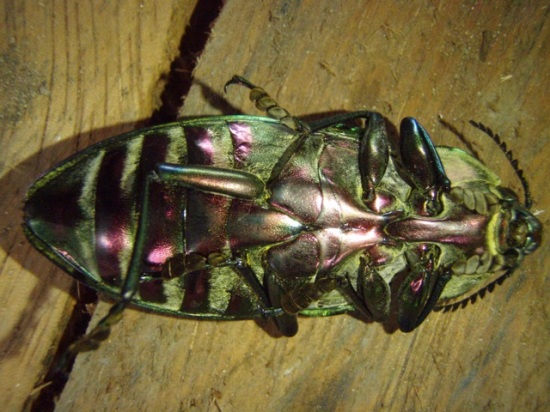
The topside of that one looks like this. It’s feet are phenomenal.
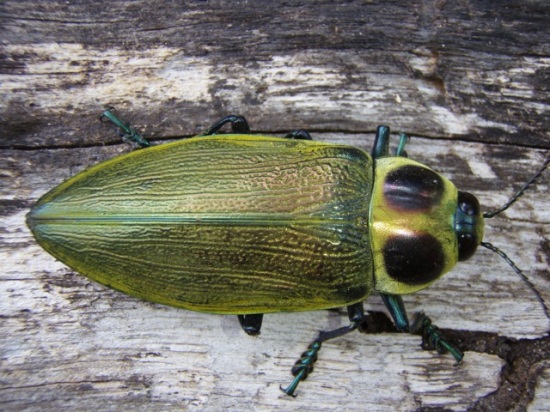
The Praying Mantis is my favourite, I think. They come in myriad sizes and disguises. I remember my attention was once grabbed by a leaf that had fallen atop a wooden balustrade. It appeared to be balancing unnaturally on one edge and I went for a closer look. Still it was a leaf, with a midrib and branching veins, slightly translucent in the sunlight. Only when my prodding finger approached to within an inch did it unfold, slowly and dramatically, like the ‘Alien’ in Ridley Scott’s film, it’s long arms stretching out to fend off my finger tip.
As it’s body turned to move away it’s big eyes remained fixed menacingly upon me until it’s head had turned over 180°. It looked evil, a killer perfected. They get pretty big in West Papua, like this one on the shoulder of a Mek girl.

This is a Spanish one. Imagine being the size of an aphid and having that come after you. Surely the mantis is the Tyrannosaurus Rex of the insect world.
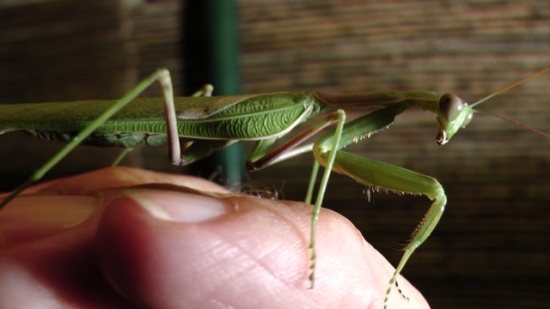
But even to beings of our size a lot of insects pack a mean punch. I never managed to get a good shot of the infamous ‘bullet ant’, so called because the pain of it’s sting (it was once a hornet) is akin to being shot, but nor do I imagine touching this youngster below is any picnic.

Just trying to picture the variations, or mutations conferring an advantage that this species must have gone through in the course of its evolution blows my mind like infinity. And then I try to picture all the other advantageous mutations that nonetheless didn’t make it because something untoward occurred, like being trodden on by a diplodocus.
I have no idea what species of butterfly or moth will emerge from each, but maybe this next one is the result of just such a series of successful mutations occurring in the species shown above, which led to a branch in the family or genus?

And don’t even start with the mutations that were downright disadvantageous and which rightly failed to endure. Being an amateur at all this, with only enough time to wonder at it all, for all I know, any one, or even all of the pictures above might be of just such an anomaly.





















